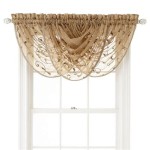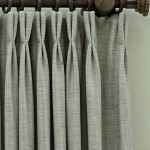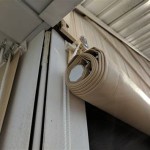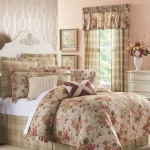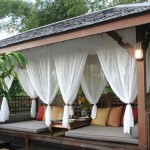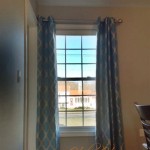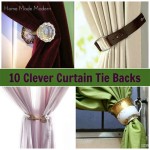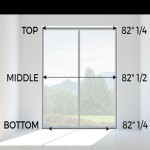Light and Heat Blocking Curtains: A Comprehensive Guide
Light and heat blocking curtains, also known as blackout curtains or thermal curtains, are window treatments designed to significantly reduce the amount of light and heat that enters a room. These curtains offer a range of benefits, from improved sleep quality to increased energy efficiency. Understanding the features, benefits, and selection criteria of these curtains can help consumers make informed decisions for their homes or businesses.
Benefits of Light and Heat Blocking Curtains
One primary advantage of light and heat blocking curtains is their ability to create a near-perfect dark environment. This is particularly beneficial for shift workers, light-sensitive individuals, or anyone who prefers a completely dark room for sleeping. By blocking external light sources like streetlights and early morning sun, these curtains promote better sleep quality and regulate circadian rhythms.
Beyond light blocking, these curtains provide substantial insulation against heat transfer. During hot summer months, they prevent solar heat from entering the room, reducing the strain on air conditioning systems and lowering energy costs. Conversely, in winter, they help retain heat within the room, minimizing heat loss through windows and improving overall energy efficiency.
Light and heat blocking curtains also offer increased privacy. The thick, opaque fabric effectively prevents outsiders from seeing into the room, enhancing the sense of security and privacy for occupants.
Key Features and Materials
The effectiveness of light and heat blocking curtains depends largely on their construction and materials. Most are made from tightly woven, dense fabrics that are specifically designed to minimize light penetration. Common materials include polyester, microfiber, and blackout lining.
Many light and heat blocking curtains feature a multiple-layer construction. This often includes a decorative face fabric, a light-blocking interlining, and sometimes an additional thermal backing. This multi-layered design maximizes light blockage, insulation, and noise reduction.
Another key feature to consider is the curtain's hanging mechanism. Grommets, rod pockets, and tab tops are common options, each offering different aesthetics and functionality. The choice of hanging mechanism can also affect the curtain's ability to effectively block light around the edges.
Choosing the Right Light and Heat Blocking Curtains
Selecting the appropriate light and heat blocking curtains requires careful consideration of several factors. Room size and window dimensions are crucial for determining the correct curtain size and fullness. Accurate measurements ensure a proper fit and optimal light blocking capabilities.
Color and style also play a significant role in the selection process. Darker colors generally absorb more light and heat, while lighter colors reflect more. The aesthetic of the curtains should complement the existing décor of the room while fulfilling the desired functional requirements.
Installation and Maintenance
Proper installation is essential for maximizing the effectiveness of light and heat blocking curtains. Ensuring a snug fit against the window frame and extending the curtains slightly beyond the edges of the window can minimize light leakage. Using curtain rods that extend beyond the window frame also contributes to increased light blockage.
Maintenance of these curtains is generally straightforward. Most can be machine washed or dry cleaned, depending on the fabric and manufacturer's instructions. Regular cleaning helps maintain their appearance and prolong their lifespan.
Cost Considerations
The cost of light and heat blocking curtains varies depending on factors such as size, material, and brand. While the initial investment might be higher than traditional curtains, the long-term benefits of energy savings and improved comfort often outweigh the upfront cost.
Applications of Light and Heat Blocking Curtains
Light and heat blocking curtains find applications in various settings. They are frequently used in bedrooms to promote restful sleep, in home theaters to enhance viewing experiences, and in nurseries to create a calm and darkened environment for infants. Businesses, such as hotels and offices, utilize these curtains to regulate temperature, reduce energy consumption, and enhance privacy in conference rooms or guest rooms.
Beyond residential and commercial settings, light and heat blocking curtains can also be beneficial in laboratories, photography studios, and other specialized environments where light control is paramount. Their versatility and functionality make them a valuable asset in a wide range of applications.

Deconovo Soundproof Blackout Curtains Thermal Insulated Noise Reducing 2 Panels 52x45 In Light Gray Wal Com

Seriously Do Thermal Curtains Really Work Deconovo Us

Dwcn Turquoise Blackout Curtains 84 Inches Long For Living Room Thermal Insulated Light Heat Blocking Full Darkening Noise Reducing Grommet 2

Gray Blackout Curtains 100 Light Blocking Heat Temu

Dwcn Room Darkening Grommet Window Curtains Blackout Drapes Total Sun Light Heat Blocking Noise Reducing Thermal Insulated 2 Panels For Living

Gray Blackout Curtains 100 Light Blocking Heat Temu

2x 100 Blackout Curtains Thermal Insulated Heat And Full Light Blocking Curtain Drapes For Living Room With Black Liner Turquoise Blue Catch Com Au

Do Blackout Curtains Keep Out Heat Time Curtain

H Versailtex Thermal Insulated 100 Blackout Curtains For Bedroom Linen Textured Heat And Full Light Blocking Drapes Living Room 2

2x 100 Blackout Curtains Thermal Insulated Heat And Full Light Blocking Curtain Drapes For Living Room With Black Liner Natural Catch Com Au

